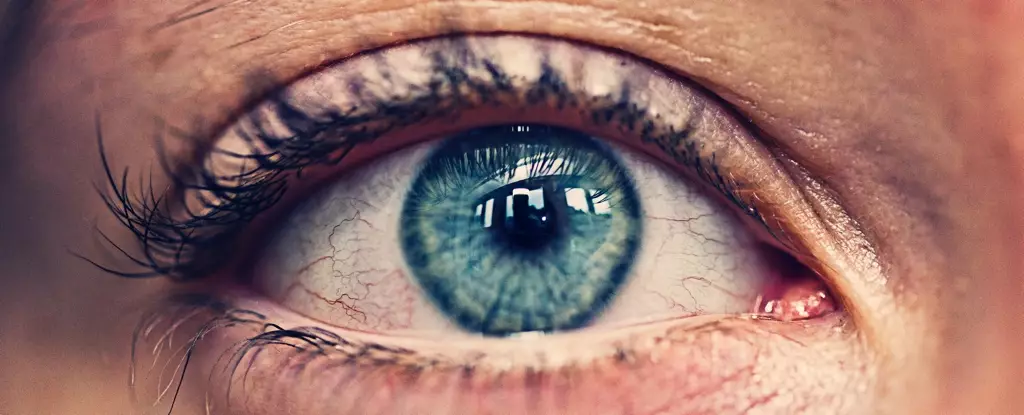As the world grapples with the ever-looming consequences of climate change, a concerning impact that often goes unnoticed is its direct relation to eye health. The case of Alka Kamble, a farmworker from Jambhali village in Maharashtra, India, highlights the insidious relationship between laboring under extreme conditions and deteriorating eyesight. Kamble endured blurred vision for months due to cataracts but felt helpless, trapped by financial constraints and relentless work demands. This narrative is not just one woman’s plight; it serves as a sobering reminder that climate change is wreaking havoc on our health in ways that many are unaware of.
The reality for Kamble—a woman who worked tirelessly under harsh sun with little protection from the elements—illustrates a broader epidemic. With climate change intensifying heat waves and increasing UV radiation exposure, more individuals in agricultural sectors face an alarming risk of ocular health issues. We need to acknowledge that while factors such as aging and genetics are part of the cataract equation, the role of climate change is becoming increasingly difficult to ignore.
Emerging Research: Climate’s Role in Eye Health Deterioration
Recent studies have begun to paint a troubling picture of the correlation between rising temperatures and eye disorders, particularly cataracts. Ophthalmologists have found that as global temperatures rise, so too does the prevalence of eye conditions. For instance, research conducted over a decade in southern Spain reported a significant increase in cataract cases associated with even slight elevations in temperature. This highlights a need for greater awareness of not just the immediate effects of climate change, such as heat exhaustion and wildfires, but also the long-term implications on our vision.
Perhaps even more alarming is the revelation that young adults are increasingly finding themselves among the ranks of those afflicted by cataracts—a condition typically associated with older age. In agricultural regions, where working conditions are exacerbated by climate change, it is crucial to consider not just immediate agricultural output but also the long-term health implications vastly left untreated.
UV Radiation: A Silent Enemy
The discussion surrounding climate change often centers on rising temperatures and extreme weather events, yet another overlooked antagonist is escalating UV radiation. Scientific analysis reveals that as climate change unfolds, individuals are exposed to higher levels of UV radiation. Those who work outdoors—be it farmers like Kamble or construction workers—are particularly vulnerable. The implications are dire: increased UV levels correlate with a rise in reactive oxygen species that wreak havoc on the eye’s lens, leading to clouding and visual impairment.
Studies have mirrored this situation across different regions, linking environmental changes with increased risks of conjunctivitis and keratitis, both of which can be debilitating. The ramifications stretch beyond the individual, affecting communities where health systems may already be strained. As more people experience vision-related issues, the burden on healthcare systems will grow exponentially, presenting a challenging dilemma at the intersection of public health and climate policy.
Protective Measures: A Call to Action
Fortunately, there are avenues for mitigating these risks, offering a glimpse of hope amidst rising dread. Eye health experts suggest practical solutions such as providing shade for outdoor workers and encouraging the use of UV-filter sunglasses. While these measures may seem simplistic, they are essential to preventing significant eye damage.
Moreover, the government and health organizations must step up initiatives that improve access to eye care services. In Kamble’s case, India’s National Programme for Control of Blindness and Visual Impairment played a vital role by covering her cataract surgery costs. Such programs are instrumental in combating the dual crises of climate change and rising health issues. As climate-promoting behaviors like smoking and excessive alcohol consumption can exacerbate eye damage, public health campaigns focusing on lifestyle changes are equally crucial.
We need to recognize eye health as a priority in climate action discussions. Policymakers must understand that the fight against climate change is inherently tied to individual health outcomes, including our sight. Failure to address these interconnected issues may result in a generation plagued not just by environmental negligence, but by an epidemic of preventable vision impairment.
The Urgency of Awareness
As the intricate effects of climate change unfurl, the stories of individuals like Alka Kamble must serve as catalysts for action. We are living in a time where it is more critical than ever to advocate for systemic changes that will not only safeguard the environment but preserve our health. The silent crisis of eye health, exacerbated by climate conditions, demands an urgent spotlight. If we ignore the long-term consequences of our changing climate, we risk not only our wellbeing but also the dignity of communities battling with uncontrollable variables every day.

